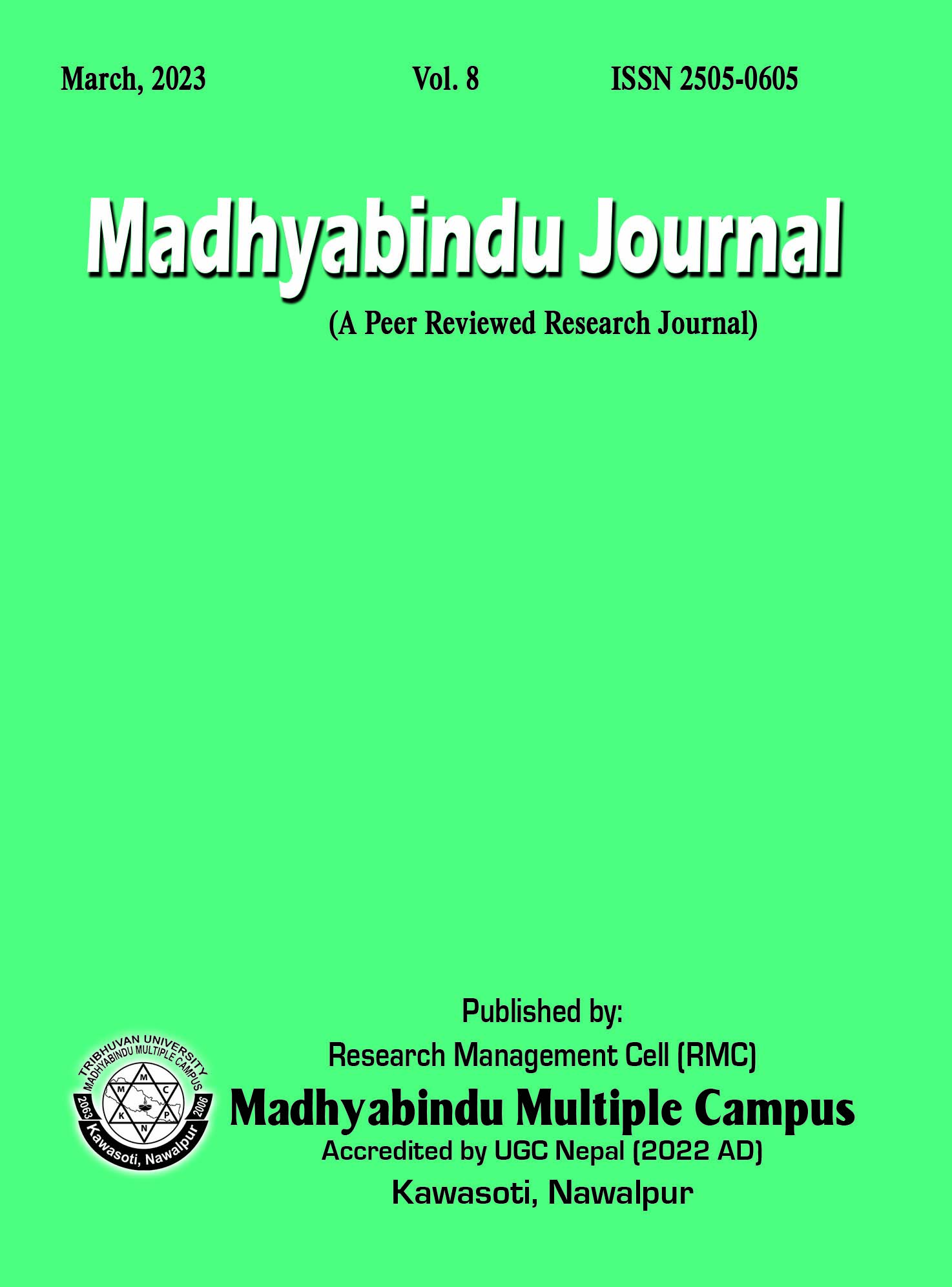Demystifying a Miracle in the Movie-127 Hours
DOI:
https://doi.org/10.3126/madhyabindu.v8i1.56887Keywords:
Hero's journey, Magic(al) Realism, adventure, boulder, amputate, survival, international iconAbstract
The desire to move as a part of an adventure, at the cost of life, simply serves for personal pleasure and self-complacency. However, the hero’s journey is not a linear path but a cyclic one and it inevitably comes across to face challenges and resistance that eventually nurtures him to grow with greater knowledge and wisdom. This paper, Danny Boyle directed movie- 127 Hours; based on true story of life, employs the Magic(al) Realism against the backdrop of Joseph Campbell’s concept of hero’s journey to examine how James Franco starred Aron Ralston, a common man of 27, undergoes a transformation of self-discovery for his ultimate survival, after five days of his unfailing struggle. The struggle was with the boulder that trapped his hand in the deep and distant Bluejohn Canyons of Utah in 2003 while canyoneering. Throughout the course of an ordeal, he regenerates his energy recalling the divine qualities of his son, mother, home, friends as well as his spouse, and resorts to the desperate measures of life. All the imagined reality comes to be true in his real life. Finally, Aron amputates his hand, escapes his fate from the inescapable, and eventually becomes an international icon, a story to be told to the rest of the world. The whole journey of the hero reflects the three stages in general as archetypes-departure, initiation and return, which is common in everyone’s life. The journey of Franco is a message of perseverance for the unfailing efforts as to reap success, instead of being helpless and hopeless while facing the boulder like obstacle, s and fighting the ordeal to ascertain one’s existence in life.
Downloads
Downloads
Published
How to Cite
Issue
Section
License
© Madhyabindu Journal
The work is simultaneously licensed under a policy and procedure of Madhyabindu Journal, which permits others to distribute the work with an acknowledgement of the work's authorship and initial publication in this journal. With an acknowledgement of its original publication in this journal, authors can enter into separate, extra contractual arrangements for the non-exclusive dissemination of the journal's published version of the work (e.g., posting it to an institutional repository or publishing it in a book).




